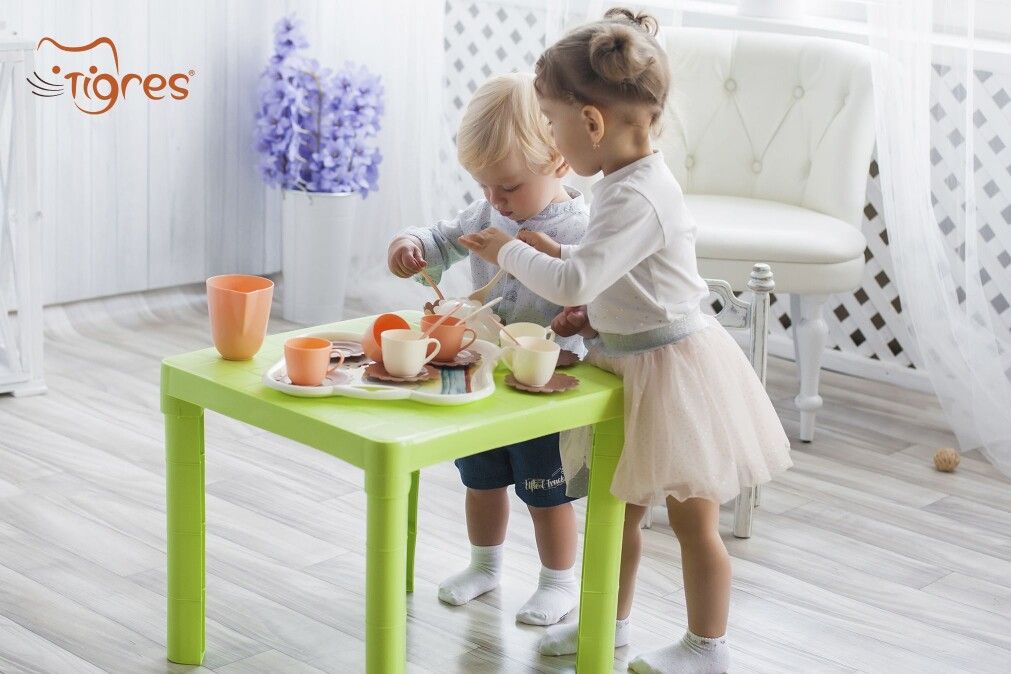
Game - the most effective way of learning
Experts have found that children have a greater tendency to acquire certain skills during certain age ranges. Of course, every child is unique, but learning for preschool-aged children should take place through play. This way, new skills are learned more quickly, and the process also generates interest in the child.
The development of language and speech occurs from 0 to 6 years of age. Physical activity and movement from 1 to 4 years. The understanding of established rules and order from 0 to 3 years. Active perception of small shapes and objects from 1.5 to 5.5 years. The development of social skills from 2.5 to 6 years.
Learning for children begins at birth. The development of speech starts from birth. As soon as the child begins to hold objects with their hands, the baby starts developing fine motor skills, which are responsible for speech. A one-year-old child playing with large construction toys learns shapes and colors.
Generally, most parents start paying more attention to their children's education when they reach the age of three. However, to ensure that your good intentions have a positive effect, it is necessary to consider the peculiarities of children's development during this period.
The first thing to remember is that the main activity of a three-year-old child is play. Therefore, all learning should take place in a playful manner. The child's mental processes are not yet stable enough, and their behavior and cognitive activity depend directly on their well-being and everything that is happening around them. It is difficult for a child to concentrate on the learning process, but they can easily be distracted from it. A funny dog outside the window, a favorite cartoon on TV, or an interesting button on their sweater can ruin all your pedagogical efforts.
To give advice on learning, follow these two conditions:
- Do not pressure the child, do not force them to learn, and do not scold them for disobedience - this will only cause them to develop an aversion to learning.
- Create a rich and varied environment for development, ideally a learning-play environment.
Teaching a Child at the Age of 5
A child still loves and perceives games the most, but gradually they become more complex and structured (including having a specific plot and roles). Therefore, at this time, the "teacher-student" model can already be applied, in which the gaming component will be combined with educational activities.
New favorable factors for learning appear: increasing memory capacity, growth of attention and concentration. Both attention and memory gradually become purposeful, so it is quite possible to concentrate a child on a certain subject or object of study. To achieve success at this stage, it is necessary to:
- Plan activities that will be interesting to the child and teach subjects on which they will be able to and want to concentrate.
- Motivate the child to learn by offering them bonuses for certain achievements.
Teaching a Child at the Age of 7
Fortunately, at this age, learning becomes the main activity for the child. They are interested and even vitally necessary to explore the world around them, learn something new, and apply the knowledge gained in practice. Changes also occur at the mental level: memory grows even more, reaction accuracy increases, and a desire for self-development is formed.
Schoolchildren learn to solve various problems, establish cause-and-effect relationships, systematize and generalize the information received. However, attention still remains unstable, although it becomes easier for children to hold it. To effectively use all the advantages of this period, it is necessary to:
- Provide the child with access to new information and satisfy their need for knowledge.
- Avoid overloading attention and choose interesting topics for study.
When to start teaching and how to organize the learning process is up to you. But always remember that play is the most effective way of learning.